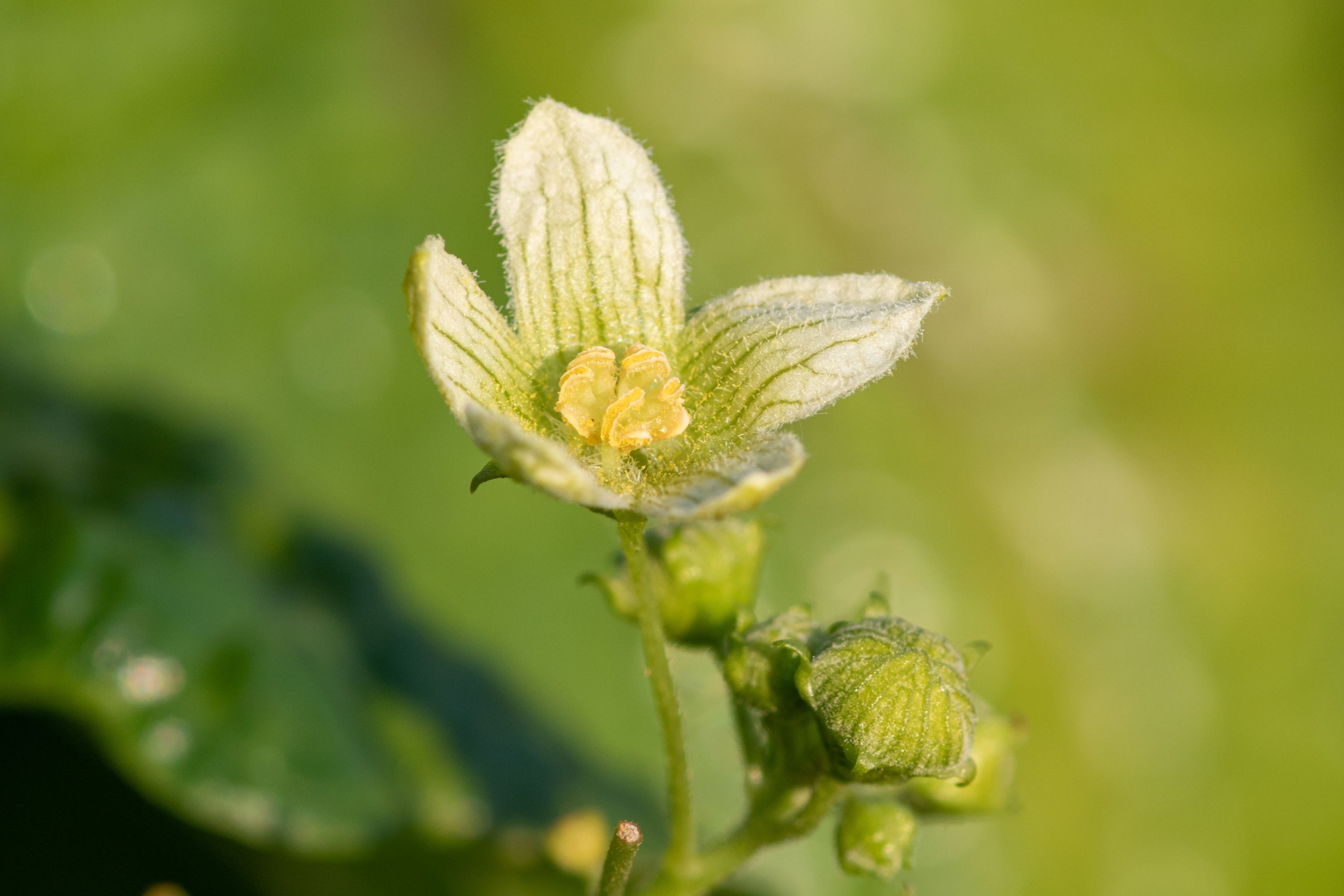White bryony
(Bryonia alba)

Description
Bryonia alba (also known as white bryony or wild hop) is a vigorous vine in the family Cucurbitaceae, found in Europe and Northern Iran. It has a growth habit similar to kudzu, which gives it a highly destructive potential outside its native range as a noxious weed. Other common names include false mandrake,English mandrake, wild vine, and wild hops, wild nep, tamus,ladies' seal, and tetterbury. An herbaceous, perennial vine of the cucumber family, white bryony is monoecious but diclinous (separate male and female flowers found on the same plant) with a tuberous yellow root.Greenish-white flowers are 1 cm (0.39 in) across. Long curling tendrils, flowers, and fruit all stem from axils of palmately lobed leaves. The fruit is a 1.5 cm (0.59 in) berry which blackens as it ripens. White bryony is native to Europe and Northern Iran. It has also been introduced to the United States, where it is listed as a noxious weed in Washington, Idaho, and Montana. Birds are the most common dispersal mechanism for this plant. They deposit seeds where they eat and nest, and so bryony is prevalent in native hawthorn patches and in windbreak, shelterbelt, riparian buffer, and wildlife plantings. Bryonia alba leaves may be used as a food plant by the larvae of cabbage moths. All parts of Bryonia alba contain bryonin which is poisonous and may cause illness or death. Livestock may also be poisoned by consuming the fruit and leaves. Forty berries constitutes a lethal dose for adult humans.
Taxonomic tree:







